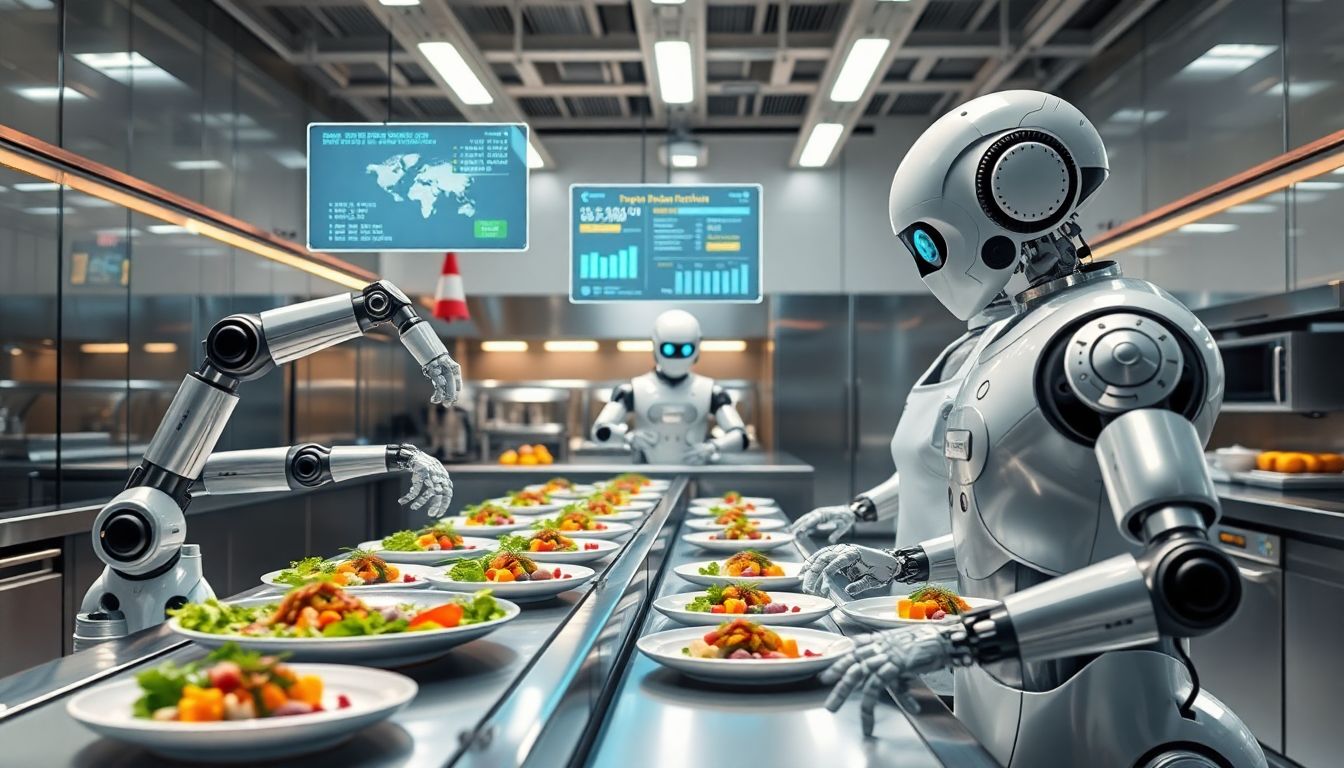
Unlocking the Future of Cuisine: The Comprehensive Guide to Food Robotics
Introduction
The food industry is changing fast thanks to robots. These machines are automating tasks that once needed human effort. They help make food faster, safer, and more uniform. Food robotics is not just a trend—it’s reshaping how we produce and serve meals.
In this guide, you'll find out how food robotics started, where it's headed, and what it means for businesses and consumers. We’ll explore different types of food robots, their benefits, and the challenges they face. Whether you're a restaurant owner or a food enthusiast, understanding food robotics can help you stay ahead.
The Evolution of Food Robotics: From Concept to Reality
Historical Background of Automation in Food Industry
Automation in food dates back many decades. The first big step came with the development of machines to process canned foods and frozen meals. Companies wanted to speed up production while keeping costs low. Early robotic arms did simple tasks like packing and mixing. Over time, these simple machines transformed into smarter robots.
Technological Breakthroughs Driving Food Robotics
Today, food robotics uses AI, sensors, and machine learning. Robotic arms can now pick, cut, and assemble ingredients with great precision. Sensory tech allows robots to detect changes in temperature, texture, and freshness. Some robots can even deliver food to your table without any help. These advances make robots better at mimicking human skills and working longer hours.
Current Trends and Market Growth
The market for food robotics is expanding quickly. Experts predict the industry will grow at over 20% yearly for the next five years. Hot trends include robot chefs capable of cooking entire meals and autonomous delivery drones. Some restaurants even use kitchens with robotic stations that prepare, cook, and serve dishes.
Types of Food Robotics and Their Applications
Robotic Food Preparation Devices
Automation takes over food prep with devices like pizza robots that spread sauce and cheese. Salad assembly lines use robotic arms to add toppings accurately. Burger robots can grill patties and assemble sandwiches in minutes. They speed up service and reduce mistakes.
Robotic Food Packaging Systems
Robots package food quickly and safely. Machines wrap products, fill containers, and label packages without contamination. This automation cuts waste, extends shelf life, and keeps packaging consistent. It’s crucial for high-volume food plants aiming for efficiency.
Robotics in Food Delivery and Service
Autonomous delivery drones now drop food at your doorstep. Inside restaurants, robots serve drinks and carry plates. These systems improve service speed and create a fun dining experience. Plus, they help reduce human contact, especially during health crises.
Specialized Robots for Food Safety and Inspection
Robots equipped with sensors check for contamination and quality issues. They scan for bacteria, foreign objects, and spoilage. These machines help ensure food meets safety standards and prevent foodborne illnesses. They make inspections faster and more accurate.
Benefits and Challenges of Implementing Food Robotics
Increased Efficiency and Productivity
Robots work 24/7, meaning more food gets prepared in less time. They reduce labor costs and free up staff for customer service. Many companies report up to a 30% rise in productivity after adopting robotics.
Consistency and Quality Control
Robots follow strict recipes and patterns. This results in uniform taste, appearance, and safety. Standardization means you get the same high-quality meal every time, whether you order today or months from now.
Food Safety and Hygiene Improvements
Touchless processes and stainless-steel robots lessen human contact. This reduces bacteria spread and keeps food cleaner. Robots working in harmony with safety protocols like HACCP make kitchens safer and healthier.
Challenges and Limitations
The biggest hurdle is the cost. High upfront expenses make small businesses cautious. Technical issues and maintenance also pose problems. Additionally, automation can lead to job losses, raising concerns about workforce retraining.
Future Perspectives and Innovations in Food Robotics
AI and Machine Learning Enhancements
Future robots will learn and adapt over time. They’ll create personalized meals based on customer preferences. Imagine a robot that customizes your dish just the way you like.
Integration with Smart Kitchens and IoT
Connected devices will make kitchens smarter. Appliances and robots will talk to each other. This network will allow for full automation, from ingredient storage to cooking and serving.
Sustainability and Environmental Impact
Robots can help cut down waste with precise measurements. Energy-efficient designs reduce power consumption. These innovations protect the planet while saving costs.
Regulatory and Ethical Considerations
As robots take on more roles, safety standards must keep up. Regulations will ensure food remains safe and ethical concerns about job loss are addressed ethically. Clear rules are essential to avoid future problems.
Practical Tips for Businesses Considering Food Robotics
- Start with a detailed cost-benefit analysis before buying robots.
- Pilot new systems in small settings to see how they fit.
- Invest in staff training for smooth integration.
- Keep tabs on updates in technology and food safety laws.
Conclusion
Food robotics is shaping a smarter, faster, and safer food world. From preparation to delivery, robots boost efficiency and consistency. While challenges exist, the future looks bright with smarter AI, better integration, and sustainable tech. For businesses willing to adapt, the rewards are clear. Embracing robotic innovation is no longer optional—it’s a necessity to stay competitive in the evolving food industry. Harness the power of food robotics today and be part of the culinary revolution.

